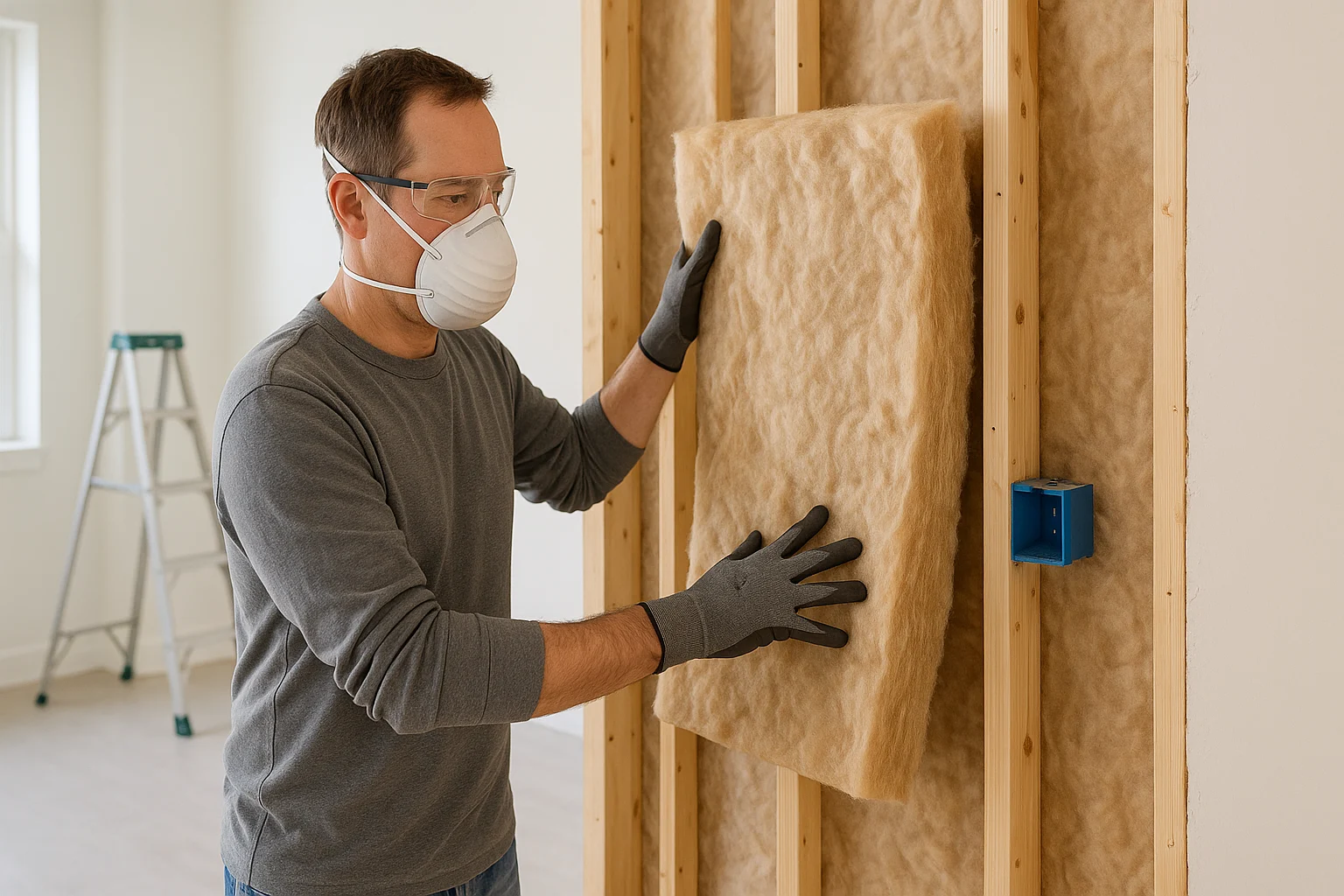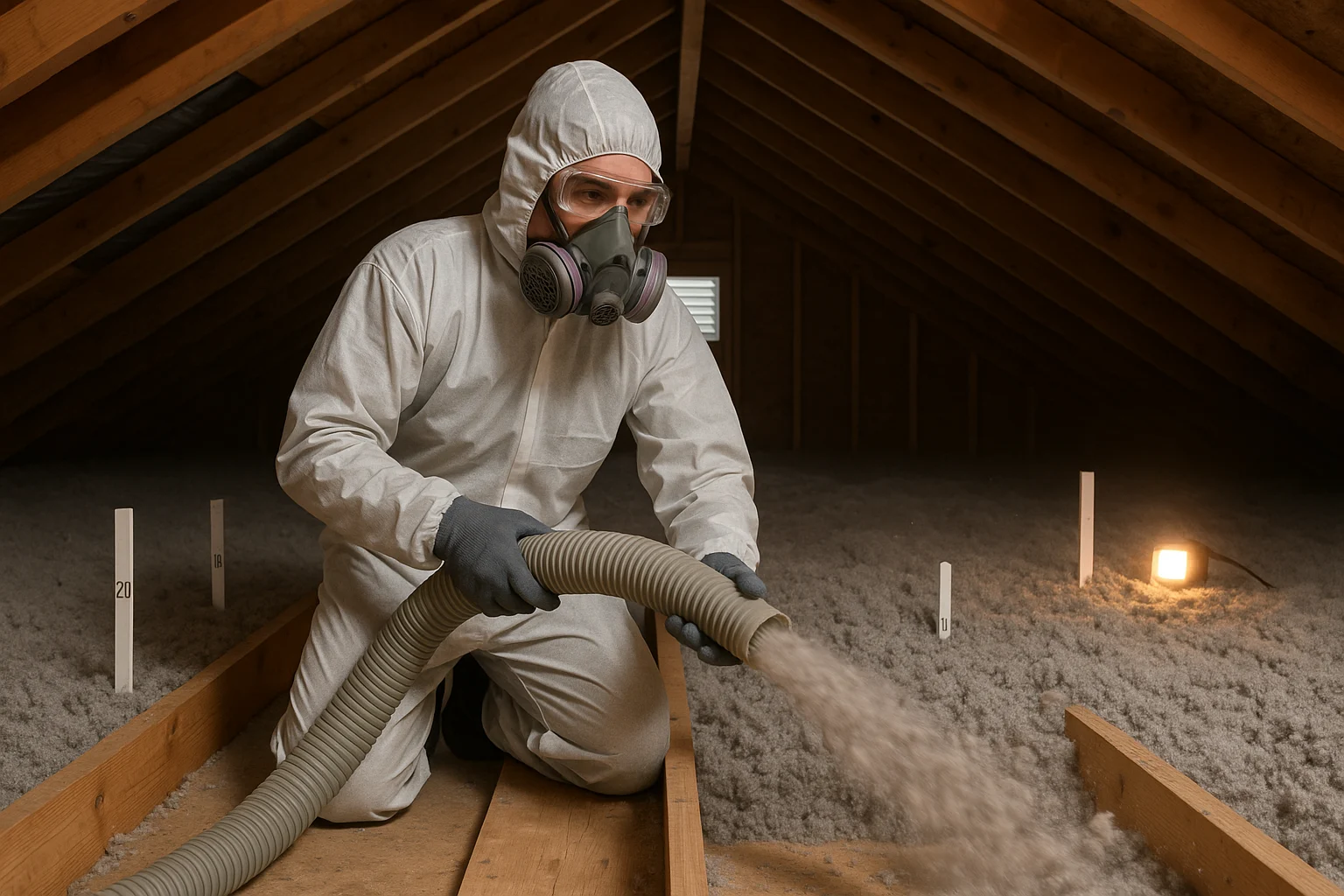
Insulation is the quickest, cheapest way to make a home quieter and cheaper to run. This guide covers the big wins—attic, walls, floors, and crawlspace—so you know what to do first, what to buy, and how to avoid mistakes. We’ll show when to use batts, blown-in, or foam, how to seal air leaks, and what “good” looks like for performance. Expect ballpark costs (materials only) of $0.50–$1.20/sq ft for batts, $1.00–$1.80 for cellulose, and more for foam kits, with many projects doable in a weekend and payback in a few seasons. If you tackle just one thing this year, make it DIY insulation.
Insulation Savings Estimator
Estimate first-year savings from a quick DIY project. Enter your monthly cost and pick the area you plan to tackle.
Estimated Annual Savings
$270 per year (≈ 15%) based on $150/mo and an attic top-up.
💡 Try increasing air-sealing to see bigger gains.
Table of Contents
- Insulation Savings Estimator
- Key Takeaways
- Why Insulation Matters in 2025
- Before You Insulate: Walls, Moisture, Pests
- Pick Materials by Area (Attic, Walls, Floors)
- Essential Tools and Safety Gear
- How to Install: Batts, Blown-In, Small-Scale Foam
- Common Wall Insulation Mistakes to Avoid
- After Installation: Seal, Check, Save
- Frequently Asked Questions
- Conclusion
This post contains affiliate links. If you buy through our links, we may earn a commission at no extra cost to you. Learn more.
Ask a home expert
Get step-by-step guidance on drilling, patching, and safe materials—so your plan is clear before you proceed.
Key Takeaways
- Choose wisely: Pick what actually fits your job—fiberglass batts if you want simple and fast, blown-in cellulose for finished walls, and DIY spray foam for small, leaky spots.
- Safety first: Suit up with a respirator, gloves, and eye protection so the work stays comfortable and safe.
- Seal air leaks: Before you add insulation, caulk and foam the cracks and gaps to cut drafts and boost your savings.
- Install carefully: Don’t crush the material or leave gaps—both can sap performance and undo a lot of your effort.
- Smart Payoff: DIY insulation can noticeably trim energy bills and boost comfort, making it a smart project for the year ahead.
Why Insulation Matters in 2025
Quick targets (U.S.): Attic R-38–60; 2×4 walls R-13–15; 2×6 walls R-19–21; floors over unconditioned spaces R-25–30; basement/crawlspace walls R-10–15 continuous or R-11–19 cavity. Choose materials accordingly: attic—blown-in cellulose or loose fiberglass (see attic insulation DIY); open walls—fiberglass or mineral wool batts; finished walls—dense-pack cellulose; gaps and rim joists—spray foam. When it comes to diy insulation in existing walls, dense-pack cellulose tends to be the go-to for most folks, while open walls often favor batts. Always air-seal first, then insulate. Check local code and climate-zone guidance before you buy materials, and double-check those wall insulation dimensions against your framing plan before grabbing supplies.
Building codes and best practices vary by location. Check your local energy code and manufacturer instructions, and consider consulting a licensed contractor for complex conditions.
Energy Efficiency Explained
Think of your home’s shell like a warm jacket. Without good insulation, heat escapes in winter and cool air leaks out in summer, forcing HVAC systems to work harder. For fundamentals and best practices, see the U.S. Department of Energy guidance.
The Comfort Factor
Beyond saving money, improved insulation brings a noticeable difference in comfort. With proper insulation, your home will have a more consistent temperature from room to room. You’ll feel cozy in winter and comfortably cool in summer—without constant thermostat tweaks.
Financial Benefits in 2025
Proper insulation can reduce heating and cooling costs substantially. For many homeowners, this translates to hundreds of dollars saved each year. Your DIY insulation project can pay for itself over time, offering an excellent return on investment. For potential tax savings on qualifying upgrades, see our guide to energy efficient home improvement credits.
Before You Insulate: Walls, Moisture, Pests
Before you jump into choosing materials, it’s crucial to understand the “canvas” you’re working with: your walls—especially if you’re planning a DIY wall insulation project. If you’re weighing how to add insulation to walls without removing drywall, dense-pack cellulose through small, patched fill holes is the usual homeowner-friendly path.
Identifying Wall Types
Stud Walls (Open Cavities): Drywall or plaster removed, exposing studs—easy for batts or spray foam. Existing Walls (Finished): Covered with drywall/plaster—usually insulated by drilling and blowing in cellulose.
Assessing Existing Insulation (If Any)
Check via attic/basement access, a small borescope inspection, or building plans. If existing insulation is thin, damaged, or settled, topping up or replacing will improve performance.
Dealing with Moisture and Pests
Fix water issues (see basement waterproofing) and exclude pests before closing cavities. Wet insulation fails and can drive mold; pests damage materials and reduce effectiveness.
Pick Materials by Area (Attic, Walls, Floors)

Fiberglass Batts
Common, affordable, and easy to cut and fit. Works best in open cavities. Requires careful fitting to avoid gaps; use PPE to prevent irritation.
Blown-In Cellulose
Great for finished walls and irregular spaces. Requires a rental blower. Fills cavities thoroughly and adds sound control; some settling is possible.
DIY Spray Foam (Cans/Kits)
Best for sealing gaps and rim joists. High R-per-inch and strong air seal; see our spray foam insulation guide. For diy foam insulation existing walls, keep it to small gaps and rim-joist areas rather than full cavities. Costly and technique-sensitive; ventilate and follow safety instructions. People often ask, can you add spray foam insulation to existing walls? It’s possible, but if you’re eyeing diy spray foam insulation for walls, I’d stick to small gaps and rim-joist spots rather than trying to fill a whole cavity.
Mineral Wool & Rigid Foam
Mineral wool batts offer fire resistance and sound dampening. Rigid foam boards provide high R and are useful for continuous insulation or specific details; for siding projects or retrofits, diy external insulation with rigid foam can bump performance without opening the interior.
Material Comparison Table
| Feature | Fiberglass Batts | Blown-In Cellulose | DIY Spray Foam (Kits) |
|---|---|---|---|
| Ease of DIY | Very Easy | Moderate (rental needed) | Difficult (precision) |
| Cost | Low | Moderate | High |
| R-Value/inch | 3.0–4.0 | 3.2–3.8 | 3.5–7.0 |
| Air Sealing | Poor (needs caulk) | Good (fills cavities) | Excellent (expands) |
| Moisture Resistance | Poor (loses R-value) | Moderate (treated) | Excellent (closed-cell) |
| Best For | Open cavities | Existing & open cavities | Gaps, small areas |
| Safety Gear | Respirator, gloves, eyewear | Respirator, gloves, eyewear | Respirator, gloves, eyewear, ventilation |
Essential Tools and Safety Gear
Safety is paramount. Typical tools: utility knife, tape measure, caulk gun, staple gun, drill/hole saw, blower (for cellulose), and a shop vacuum. PPE: respirator or N95, safety glasses, heavy-duty gloves, long sleeves/pants, and a hat. Ventilate well when using spray foam.
How to Install: Batts, Blown-In, Small-Scale Foam
Preparation is Key
Clear the area, secure wiring and plumbing, and air-seal all cracks and gaps before insulating. This step often delivers the biggest comfort gains.
Method 1: Fiberglass Batts (Open Cavities)
Measure and cut fiberglass batts; fit snugly without compression; place vapor retarder to the conditioned side when code requires; then close with drywall. If you need a refresher on how to hang insulation in walls, staple paper-faced flanges to the stud sides (not the faces) and avoid over-tensioning the batt.
Pro tip: When to tap an expert — If you’re unsure about hidden wiring, hole spacing, blower settings, or foam expansion control, a quick chat with a home-improvement expert can help you sequence safe next steps.
Method 2: Blown-In Cellulose (Finished Walls)
Plan access holes, drill carefully, and dense-pack cellulose into each bay with the blower, then patch and finish. If you’re considering diy injection foam insulation existing walls, know that expansion control and consistency are tricky—many DIYers reserve it for small test areas or hire a pro for whole-wall fills.
Help with dense-pack walls
Walk through hole spacing, blower settings, and safe fill so you avoid voids and over-packing.
No discount code needed — just click and explore.
Method 3: DIY Spray Foam (Small Scale)
Mask the area, go slow—the foam expands—let it cure, then trim it flush. For bigger voids, build it up in a couple of passes. Folks tackling diy spray foam insulation existing walls usually find it shines as a spot-seal job, not a full-cavity overhaul.
Story: The Millers’ Comfort Transformation
The Millers live in a 1960s home that used to feel drafty. One weekend they sealed obvious gaps and added batts where cavities were thin. Within a few weeks, the cold spots faded; by spring, the living room felt steady and the utility bill dipped a bit.
Common Wall Insulation Mistakes to Avoid
Watch for gaps and compression, seal air leaks first, wear proper PPE, and sort out moisture problems before you close up the wall. If you try do it yourself foam insulation existing walls, practice on a small test section and follow the cure time and ventilation directions closely.
After Installation: Seal, Check, Save
Inspect for gaps over time, especially near outlets, windows, and baseboards. Track energy bills year over year and adjust thermostat setpoints to harvest more savings (more ideas in lower your electric bill).
Frequently Asked Questions
Conclusion
Taking on wall insulation DIY is a high-impact way to improve comfort, cut bills, and add value. Prioritize air sealing, match materials to the space, and follow safety guidance for results that last.
This guide is educational and general in nature. It is not building, safety, tax, or legal advice. Building codes and incentives change and vary by location; consult local code officials and qualified pros for your specific conditions, and a tax professional for credit eligibility.